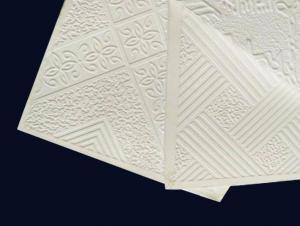Suspended ceilings, also known as drop ceilings or false ceilings, are a popular choice for many homeowners and businesses alike. They offer a variety of benefits, including easy installation, cost-effectiveness, and the ability to hide utilities and wiring. But with so many options available, it can be overwhelming to decide on the right type of suspended ceiling for your space. Thats where we come in. In this comprehensive guide, well explore the ins and outs of suspended ceiling grids, providing you with the knowledge you need to make an informed decision.
What Are Suspended Ceiling Grids?
&8212;
Suspended ceiling grids are the framework that supports the ceiling tiles. They are typically made of metal or plastic and consist of a series of interlocking panels that create a grid-like pattern. These grids are suspended from the existing ceiling using wires or other support systems, allowing for easy access to the space above for maintenance or installation of utilities.
Why Choose a Suspended Ceiling?
&8212;
There are several reasons why you might choose a suspended ceiling for your home or business. Here are a few of the top benefits:
1. Aesthetics: Suspended ceilings can be customized to fit your style and preferences, with a wide range of tile designs, colors, and materials to choose from.
2. Accessibility: The grid system allows for easy access to the space above, making it simple to install or maintain utilities and wiring.
3. Acoustics: Suspended ceilings can help improve the acoustics in a room by absorbing sound and reducing echo.
4. Energy Efficiency: By creating a space between the ceiling and the floor above, suspended ceilings can help to insulate the area and reduce energy costs.
5. Flexibility: The modular nature of suspended ceilings makes them easy to install, modify, and reconfigure as needed.
Types of Suspended Ceiling Grids
&8212;
When it comes to choosing the right type of suspended ceiling grid, there are a few key factors to consider. Here are some of the most common types:
1. Metal Grids: Known for their durability and strength, metal grids are a popular choice for commercial and industrial settings. They are also available in a variety of finishes to match your desired aesthetic.
2. Plastic Grids: Lightweight and easy to install, plastic grids are a more budget-friendly option. They are also available in a variety of colors and styles.
3. Custom Grids: For those looking for a more unique or specialized solution, custom grids can be designed to meet specific needs or preferences.
4. Acoustical Grids: These grids are specifically designed to improve acoustic performance in a space, often featuring sound-absorbing materials or features.
Installing Suspended Ceiling Grids
&8212;
Installing a suspended ceiling grid can be a straightforward process, but it does require some planning and preparation. Here are the basic steps involved:
1. Planning: Measure the area where you want to install the ceiling and determine the layout of the grid. Consider factors such as the location of light fixtures, vents, and other architectural features.
2. Materials: Gather all the necessary materials, including the grid panels, support wires, and any additional hardware needed for installation.
3. Installation: Begin by installing the perimeter rail, which will serve as the border for your grid system. Next, attach the main runners and cross tees to create the grid pattern. Finally, secure the ceiling tiles in place.
4. Finishing Touches: Once the grid is in place, you can add any additional features or accessories, such as lighting or air vents.
Maintenance and Care
&8212;
Proper maintenance and care are essential to ensure the longevity and performance of your suspended ceiling. Here are a few tips to keep in mind:
1. Cleaning: Regularly clean the ceiling tiles and grid system to remove dust and dirt. This can be done using a vacuum cleaner with a brush attachment or a damp cloth.
2. Inspection: Periodically inspect the grid system for any signs of damage or wear. Address any issues promptly to prevent further problems.
3. Replacement: Over time, some ceiling tiles may need to be replaced due to damage or wear. Be sure to have spare tiles on hand to make this process easier.
4. Upgrading: If you decide to update the look of your suspended ceiling, its relatively simple to replace or modify the tiles and grid system as needed.
The Future of Suspended Ceilings
&8212;
As technology and design trends continue to evolve, so too will the options and capabilities of suspended ceilings. Here are a few predictions for the future of this versatile solution:
1. Green Materials: We can expect to see more sustainable and eco-friendly materials being used in the construction of suspended ceilings.
2. Smart Technology: The integration of smart technology into suspended ceilings could provide additional functionality, such as energy-saving features or integrated lighting systems.
3. Customization: With advances in manufacturing and design, we can anticipate even more options for customization, allowing for greater personalization of suspended ceilings.
4. Innovations in Acoustics: As the demand for improved acoustic performance grows, we can expect to see new innovations in the design of acoustical grids and tiles.
In conclusion, suspended ceiling grids offer a versatile and practical solution for a variety of spaces. By understanding the different types, benefits, and installation process, you can make an informed decision about whether a suspended ceiling is the right choice for you. And with the ongoing advancements in technology and design, the possibilities for suspended ceilings are only going to expand in the future.

